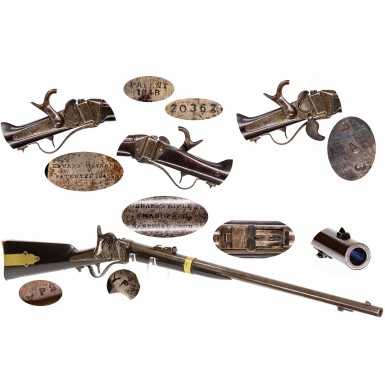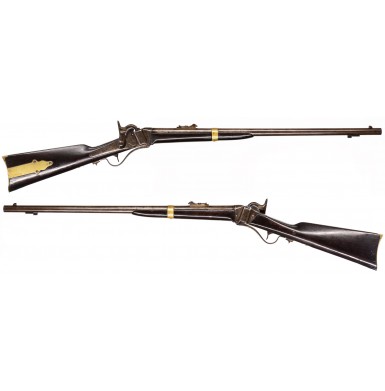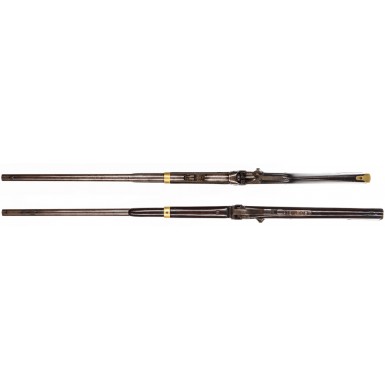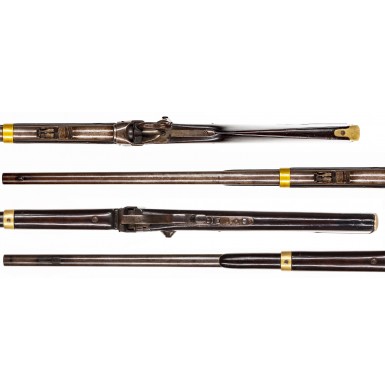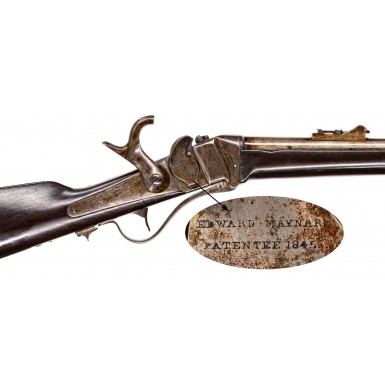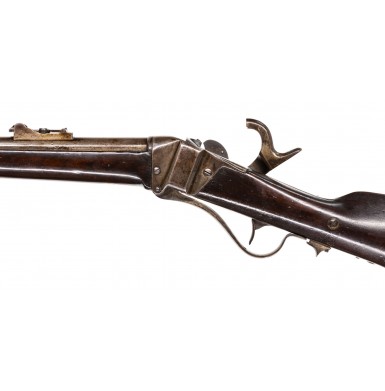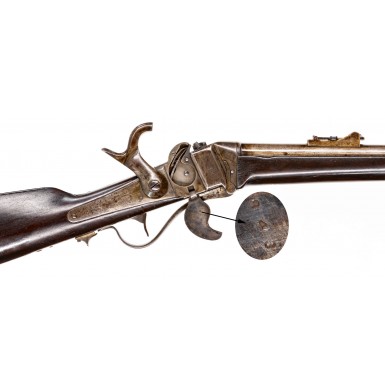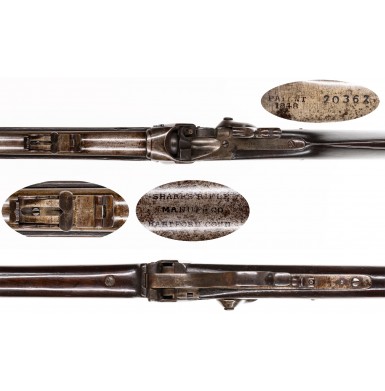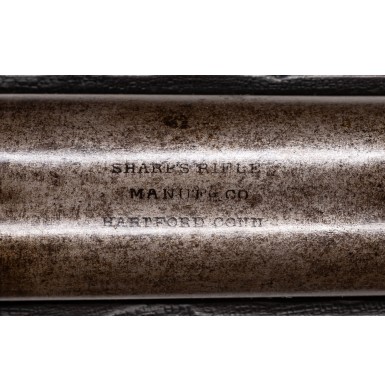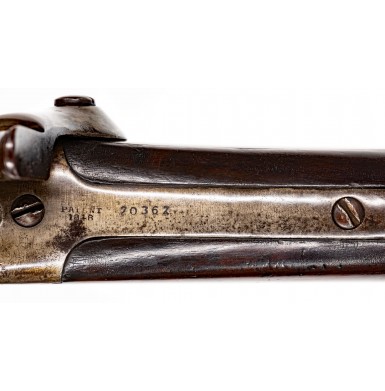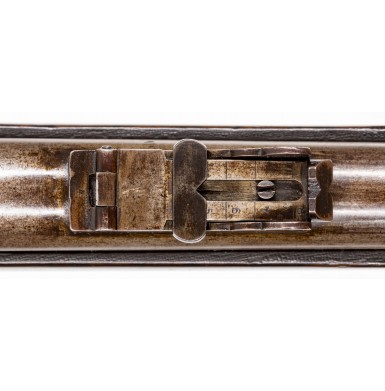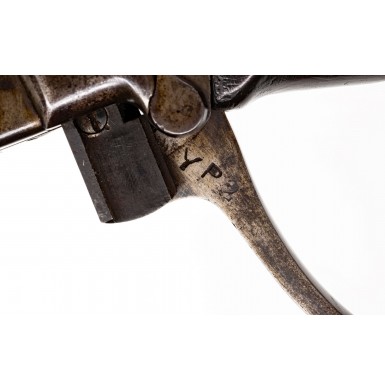On 13 April of 1855 the Unites States military contacted Sharps about acquiring additional carbines for the use of their cavalry regiments that were primarily deployed on the western frontier. The army had previously acquired Model 1852 and Model 1853 military carbines from Sharps and were generally satisfied with their performance in the field. Colonel Henry Knox Craig of the Ordnance Department wanted to upgrade and standardize the Sharps carbines in the field to bring them into compliance with the newly adopted Maynard Tape Priming system, which had been approved the previous year. This system had been adopted as part of the US Model 1855 series of arms and Craig almost certainly hoped to standardize and simplify supply by acquiring Sharps carbines that utilized this system as well.
When Craig approached Sharps, he was told that while Model 1852 Sharps Carbines with the Sharps priming system were readily available, that no guns were available for delivery with the Maynard system. It was clear that that it would take some time to modify the receivers of the carbines then in production to work with the Maynard system. From Sharps’ standpoint this would involve a substantial investment in design, time, and machinery. Additionally, the initial order proposed by Craig was only for 400 guns, so it is not surprising that Sharps response was that the firm would be glad to deliver 1852 pattern guns immediately, but that it would take at least 90 days to deliver guns with the Maynard priming system. This quote of how much time would be required is somewhat interesting. From a practical standpoint the Sharps company had to know that it would be impossible to tool up and produce the requested variant in such a short period of time particularly since they did not have a Maynard lock to copy. Realistically the goal was probably to encourage the Ordnance Department to simply accept the offered Model 1852 carbines rather than wait. However, the quoted delay was short enough to reduce the chance that the Ordnance Department would simply abandon the order. In the end it would be a year before the order would be filled. Between the delays in receiving the sample lock to copy, the time necessary to redesign the receiver, the investment of some $6,000 in new machinery and tooling and the time to re-tool for the production of the guns, it would not be until 25 April 1856 that the first 200 of the 400 carbines would be delivered. The balance would receive their final inspection on May 15.
This small order, did not however, begin to cover the investment that the Sharps company had made to be able to produce the new model. Thankfully in August of 1855 the British government had placed an order for some 6,000 Sharps Model 1855 Carbines, although these guns were slightly different in configuration from the US Army contract guns. This order was a mixed blessing for Sharps as they were not in position to fill it due to current orders and the work to get up to speed to produce the US contract carbines. As a result, the company farmed the work out to Robbins & Lawrence of Vermont, who were already experienced in dealing with the British War Department, as that firm was also manufacturing Pattern 1853 Enfield Rifle Muskets for the British Government.
The US Navy also acquired a small number of Sharps Model 1855 carbines and rifles. In 1856 the company was approached by the head of US Naval Ordnance, John Dahlgren, to provide a sample carbine and rifle for testing. These guns met with the Naval ordnance board’s approval and Dahlgren subsequently ordered 150 rifles at the rate of $36 each. The first 100 were delivered on 24 September 1856, with 12 more delivered on October 24. The final 38 guns were delivered on June 5 of the following year. An additional 100 of the rifles were ordered on 9 September 1856, prior to the first deliveries.
In March of 1857, after the completion of the British carbine contract, the Ordnance Department was offered the opportunity to acquire 200 Model 1855 Carbines with 18” barrels in .577 caliber that were part of leftover arms from the British contract. This offer was accepted, and the guns were inspected and delivered to the US military. An additional 101 of these British contract carbines were offered to the Navy as well, and again the offer was accepted.
The 1855 Naval Rifle were produced in the standard .52 caliber chambering of most of the Sharps military arms of the period. Unlike the shorter barreled carbines, the guns were produced with a 28.25” long barrel that was mounted with a keyed saber bayonet lug underneath. A brass handled semi-yataghan saber bayonet produced by the Ames Manufacturing Company was delivered with the rifles. Like all Model 1855 Sharps arms, the guns were equipped with the Maynard Tape Priming System. The guns were not equipped with a sling bar like the carbines were, neither were they equipped with sling swivels. The rear sight was an adjustable ladder of the Enfield rifle musket pattern, and the front sight was the usual barrel mounted blade. The guns were blued with color casehardened frame, had brass furniture which included a patchbox and were stocked in walnut. Most of the existing Sharps 1855 Navy Rifles have no markings at all to distinguish them as navy contract arms, although occasionally the guns are found with a small anchor inspection mark on the barrel, which was placed there during a reinspection of naval small arms that took place during the end of the Civil War and the immediate post-war period. Interestingly the 1855 Navy Carbines were inspected and marked on their patchbox doors.
The Sharps Model 1855 Navy Rifles were issued as part of the small arms inventory of several US Navy ships. These included the USS Mississippi, the USS Wabash, the USS Minnesota, and the USS Merrimack. Of these, the Merrimack was certainly the most famous, that ship was captured by the Confederacy and rebuilt as an iron clad. The ship was rechristened the CSS Virginia but would go down in history with its original US Navy moniker as the foe of the US Navy ironclad the USS Monitor. The two ships fought the “first clash of the ironclads” in Hampton Roads, VA on March 9, 1862.
The carbine is marked in the usual way on the tang, with a three-line patent marking and the serial number. These read SHARPS / PATENTEE / 1848 followed by the number 20362 and the matching serial number is present on the barrel, under the forend and in the forend. The word “Sharps” is almost completely gone and barely legible in the marking and the balance of the three-line marking is weak as well. The tape primer door is marked in two lines:
EDWARD MAYARD / PATENTEE 1845.
The inside of the primer door is assembly numbered 843. The barrel is marked in three lines:
SHARP’S RIFLE
MANUFG CO
HARTFORD CONN.
The gun is assembly marked YP2 throughout. This mark appears under the barrel, inside the forend, in the lock, in the wood of the patchbox, and on the obverse side of the breech block lever. The mating code N5 appears inside the patchbox door. The correct Enfield-style long-base adjustable rear sight is in place and is correctly graduated to 900 yards. The usual Sharps saber bayonet lug is present under the barrel 2.75” from the muzzle with a .875” guide key. The lug is marked with a 0.
The gun remains in about VERY GOOD+ condition. The barrel has a lightly oxidized streaky brownish patina over a dull gray base metal color. The metal remains mostly smooth with some lightly scattered pinpricking. The metal was lightly cleaned long ago, leaving some of the markings light, but they remain fully legible. The breech block and tape primer area show some minute traces of color, particularly on their interior, while the majority of the region has an attractive plum toned brownish-gray patina. The carbine is mechanically functional, and the Maynard tape priming system remains complete and functional as well. The bore of the carbine is about VERY GOOD. It is moderately oxidized with strong rifling and scattered pitting along its length. The gun retains the original Enfield-style ladder rear sight, base and blade front sight and saber bayonet lug under the barrel. The brass furniture has an attractive, untouched ocher patina. The stock is in about VERY GOOD condition. It has been lightly sanded and has an old layer of varnish applied to it. The varnish is worn away in some areas and is starting to alligator in other areas. The forend shows a small chip missing from the upper obverse edge, just forward of the receiver. The wood shows scattered bumps, dings, and mars, with the forend showing slightly more marks than the butt.
Overall, this is a very nice example of an extremely rare Sharps military rifle that is missing from many of the most advanced Sharps’ collections, as well as US Naval Small Arms Collections. These rifles are rarely found for sale in such attractive and complete condition. Don’t miss the opportunity to add this rare rifle to your collection.

